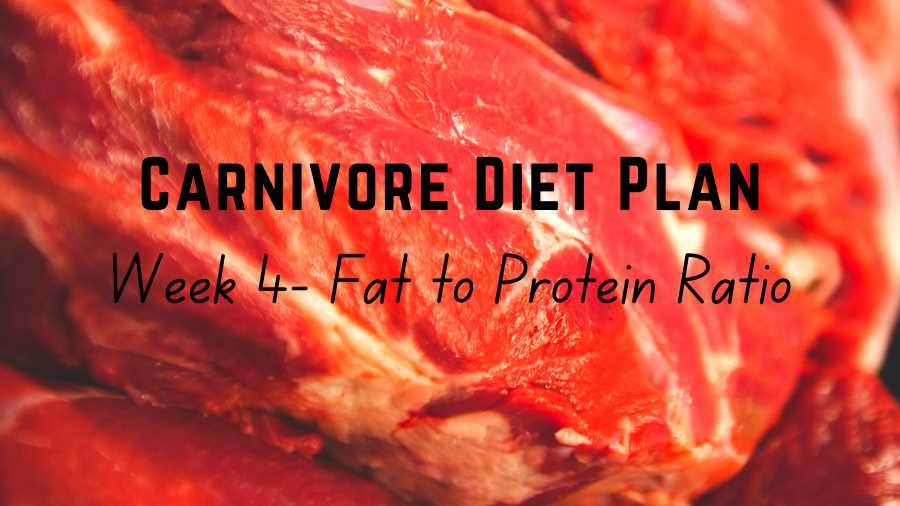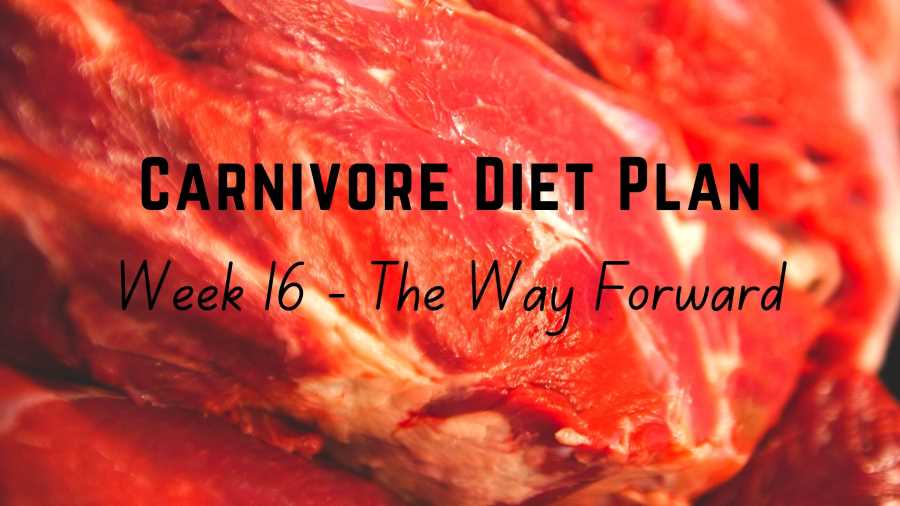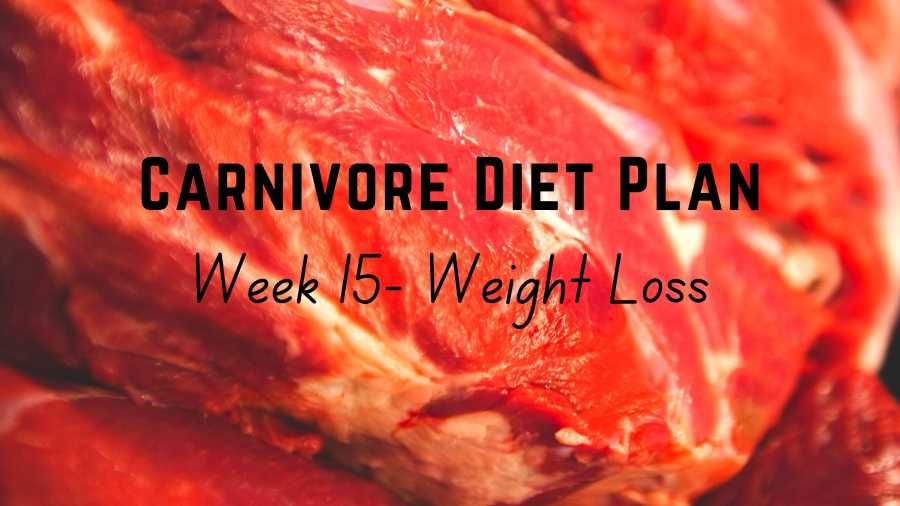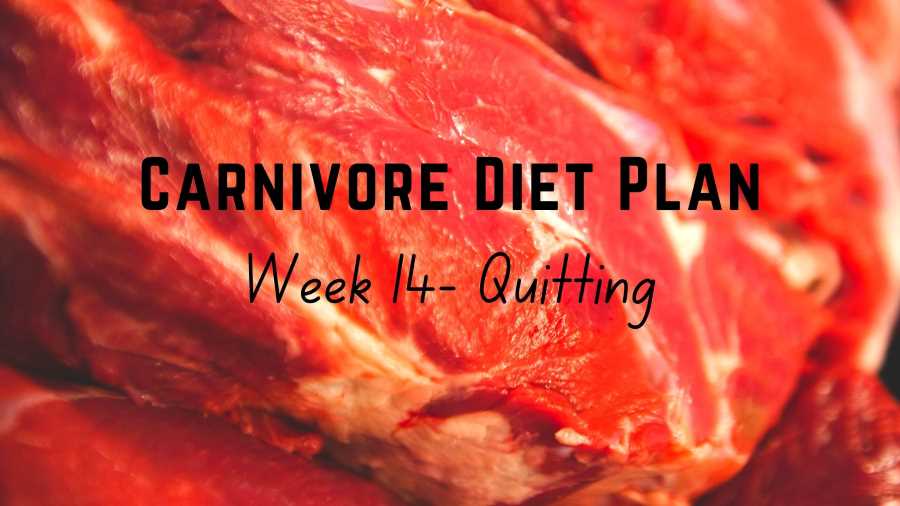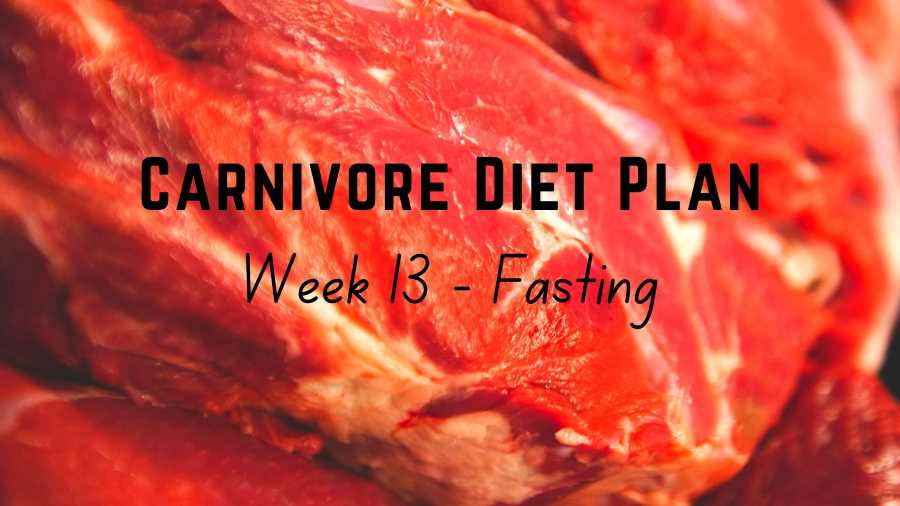This week you will be eating the same way that you’ve been eating in the last two weeks, a lot of ruminant meat and organ meat.
However, you will be looking at finding out the fat to protein ratio that you feel best on. Let’s first look at why getting the fat to protein ratio right is important.
The importance of getting the fat to protein ratio right
I have previously written a detailed post on the optimal fat to protein ratio on the carnivore diet. If you haven’t read it already, please check it out. Below is a short summary.
Protein is essential for human life.
Protein forms the major structural components of all the cells of the body, they are essential building blocks of bones, muscles, hair, skin, and joints.
Protein also functions as enzymes, in membranes, as transport carriers, and as hormones.
An adequate supply of dietary protein is essential to maintain cellular integrity and function, and for health and reproduction. Protein undernutrition can have many serious health implications.[1]
However, fat is super important too.
On the carnivore diet, in the absence of a substantial supply of carbohydrates, fat is an essential source of energy. Although your body can convert protein to glucose through the glucogenesis genesis, it needs fat as a primary fuel source.
Some fats such as omega 3 and omega 6 which play a critical role in the development of the brain and retina are essential. Your body cannot make those and must obtain them from dietary sources.[2]
In addition, fats are needed to help your body absorb fat-soluble vitamins such as vitamins A, D, E, and K.
Therefore, it is important to get both protein and fat in the right proportion.
A too high protein intake can lead to protein poisoning or “the rabbit starvation syndrome”. This is because the liver has a limited capacity to deaminate proteins and produce urea for the excretion of excess nitrogen.[3]
Vilhjalmur Stefansson, an Arctic explorer and ethnologist was put on a one-year of meat-only diet as an experiment in 1928 at Bellevue Hospital.[4] When they first fed him a very high protein diet which accounted for 44% of his total calorie intake, he developed nausea and diarrhea. When the protein intake was reduced to around 20% and fat intake was increased to around 80%, nausea and diarrhea disappeared.
On the other hand, too much emphasis on fat and fearing protein might mean you don’t eat enough meat and get enough protein and other essential nutrients. Fat is calorie-dense but definitely not as nutrient-dense as meat.
Eating too much fat at the initial stage of your diet might also cause diarrhea because your body needs time to increase digestive enzymes to properly handle the sudden increase in fat intake.
How to find out the ideal fat to protein ratio for yourself
No universal fat to protein ratio suitable for everyone has been established.
However, there is a range of tolerable protein intake that you can base on to find a sweet spot for yourself.
The Institute of Medicine recommends protein intake in the range from 10% to 35% of total energy.[5]
The ICMNI in Hungary which has been using a high-fat animal-based diet to treat many chronic conditions since 2012, recommends a 2:1 fat-to-protein ratio (in grams). This means around 18% of calories are from protein and 82% of calories are from fat.
Resistant-trained and well-adapted individuals appear to be able to handle a higher protein intake.
Many people on the carnivore diet reported feeling best on a high fat to protein ratio with around 80% of the calories from fat and 20% of calories from protein.
However, in one study, the Greenland Eskimos were estimated to have gotten 44% of their energy from protein.[6]
Clearly, people can tolerate a really wide range of protein to fat ratios.
As I wrote in this post, the right fat to protein ratio for you will depend on your nutritional status, body composition, and level of physical activity.
If you come from a vegan or vegetarian diet, the standard American diet, or a typical Western-style diet, you might be overweight or obese, under-muscled and malnourished, you should eat more meat and/or organ meat which is a lot more nutrient-dense than fat. This will give your body the nutrients it needs to heal, support weight loss, and maintain muscle mass.
If you are a very physically active individual who resistant-train regularly and has a high muscle mass percentage, you might need a higher protein intake.
To find out what the best fat to protein ratio for yourself is, you will need to have a rough estimate of what your current fat to protein ratio is.
As mentioned in the last post, the best way to find out is to keep a food diary for about one week.
Once you know where you are, you can start tweaking it considering your health conditions, nutritional status, body composition, and level of physical activity.
I suggest starting with the middle range of the above tolerable range which is about 70% fat and 30% protein in terms of calories. In terms of weight, this is approximately 1 gram of fat to 1 gram of protein.
If you are into bodybuilding, have a high muscle mass percentage, or come from a vegan, vegetarian or SAD diet, I suggest aiming for a higher protein intake.
Adding more protein to your diet is easy, just get leaner cuts of meat compared to what you’ve been getting so far.
However, if you find that you feel better on a higher fat to protein ratio (e.g. 80% to 20% fat to protein ratio), make sure you incorporate organ meat into your diet regularly to boost your nutritional status, especially at the early stage of your carnivore diet journey.
It might look like you have to eat a lot of fat to reach the 70:30 or 80:20 fat to protein ratio, but remember that 1 gram of fat delivers 9 calories and 1 gram of protein delivers 4 calories, so you don’t need to eat as much fat as you might think.
Ground beef with 20% fat and 80% lean meat will give you approximately 70:30 fat to protein ratio in terms of energy already.
However, because animal fats have been demonized for so long, most of the meat cuts that you find in grocery stores have their fat trimmed off so they are likely to be quite lean. In this case, you do need to add some extra fat to your steaks.
If you need to add more fat to your diet, the best fat to eat is ruminant fat. This is easy, just go to a butcher and ask for some fat trimmings. They will happily sell it to you very cheaply or even give it away for free.
If you have a big freezer, get half a cow and ask the supplier to leave the fat on and you will get plenty of fat in your diet.
Please check out this post for some tips on how to add more fat to your diet.
Take-home message for this week
This week, you will be eating the same as last week: lots of ruminant meat and organ meat. In summary:
- Eat ruminant meat (e.g. beef, lamb, bison, goat, kangaroo etc.)
- Eat only when you are hungry and eat until you are full but don’t overeat
- Cook some of your meat to blue, rare, medium rare, or medium
- Have liver and other organ meat regularly (3 – 5 times a week or more)
- Drink a small cup of bone broth daily
- Salt to taste
- Drink water to thirst.
Links to all posts in the 16-week carnivore diet plan
- 16-Week Carnivore Diet Plan: An overview
- Week 1: Preparation
- Week 2: Ruminant and liver
- Week 3: Ruminant and more organ meat
- Week 4: Fat to protein ratio
- Week 5: Sun exposure
- Week 6: Salt experiment
- Week 7: Ancestral movements
- Week 8: Meal frequency and meal timing
- Week 9: Intolerance testing (other animal-based food)
- Week 10: Intolerance testing (fruits)
- Week 11: Intolerance testing (other plant food)
- Week 12: How much to eat
- Week 13: Fasting
- Week 14: Quitting
- Week 15: Weight loss
- Week 16: The Way Forward.
If you find this post helpful, please consider sharing this post and my site with your family, friends, and followers. That would be much appreciated. Please also check out my library of articles on the carnivore diet here which is updated regularly.
Disclaimer: The information in this post is for reference purposes only and not intended to constitute or replace professional medical advice. Please consult a qualified medical professional before making any changes to your diet or lifestyle.
Photo credit: Julian Peter on Pexels

